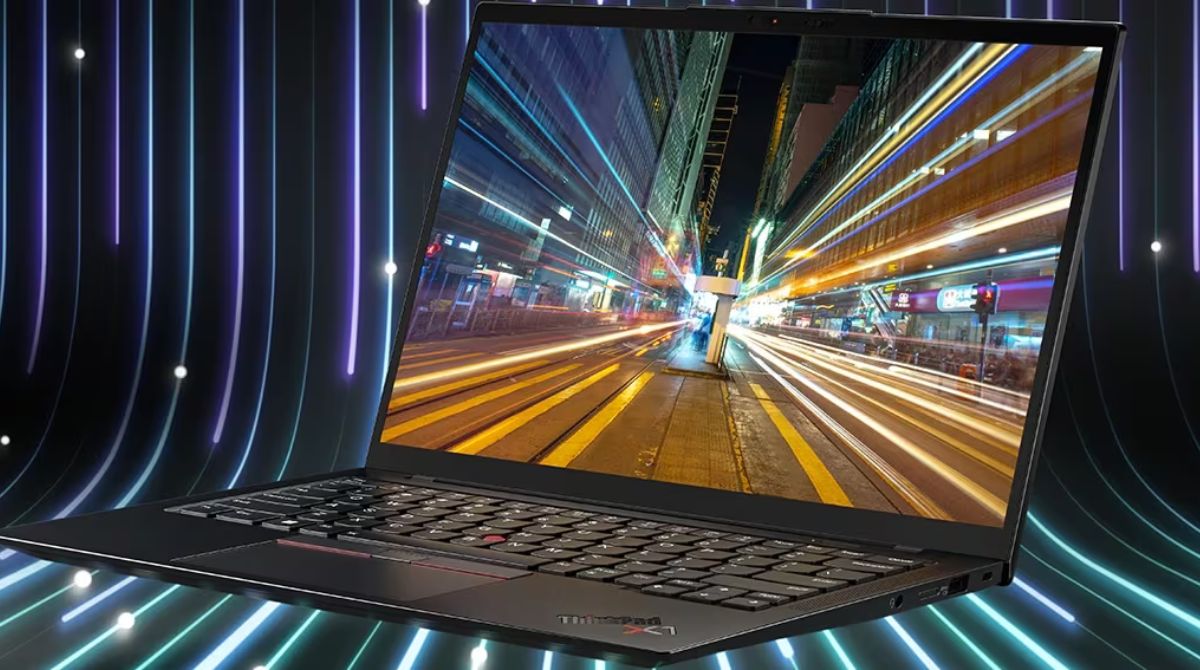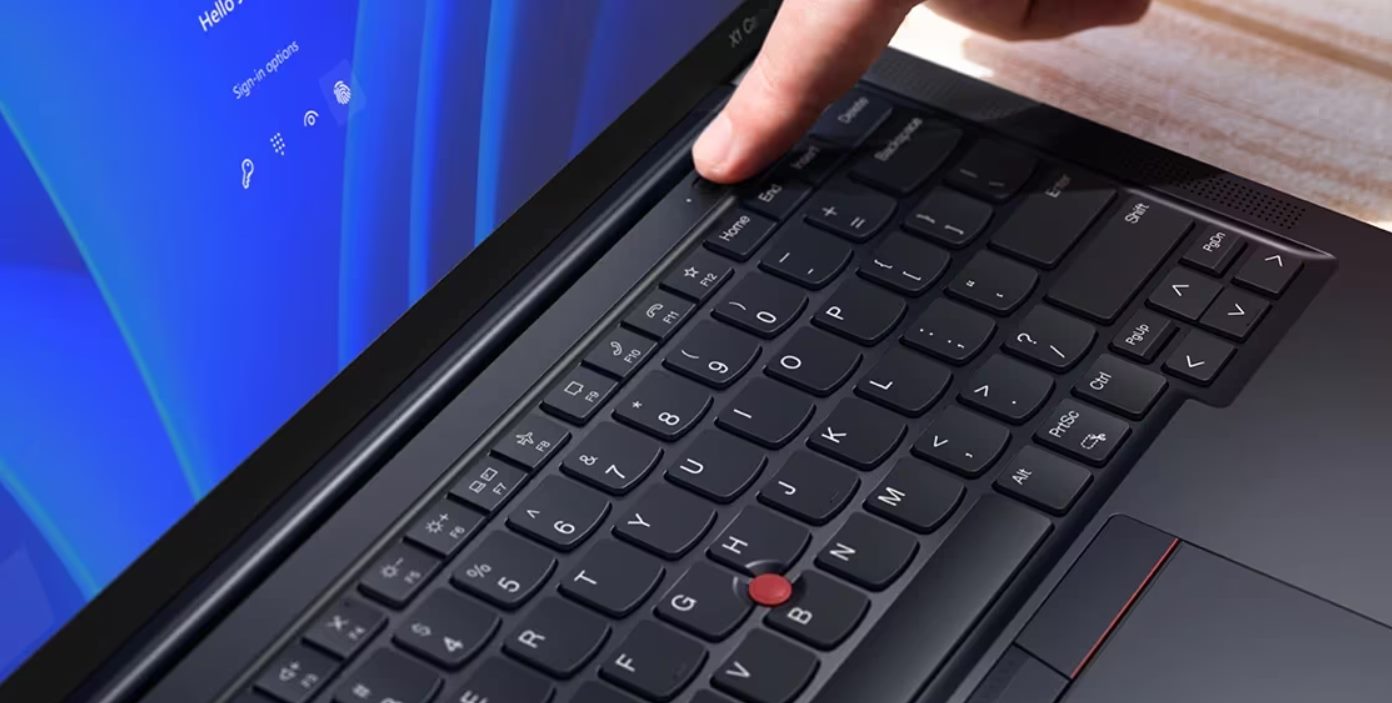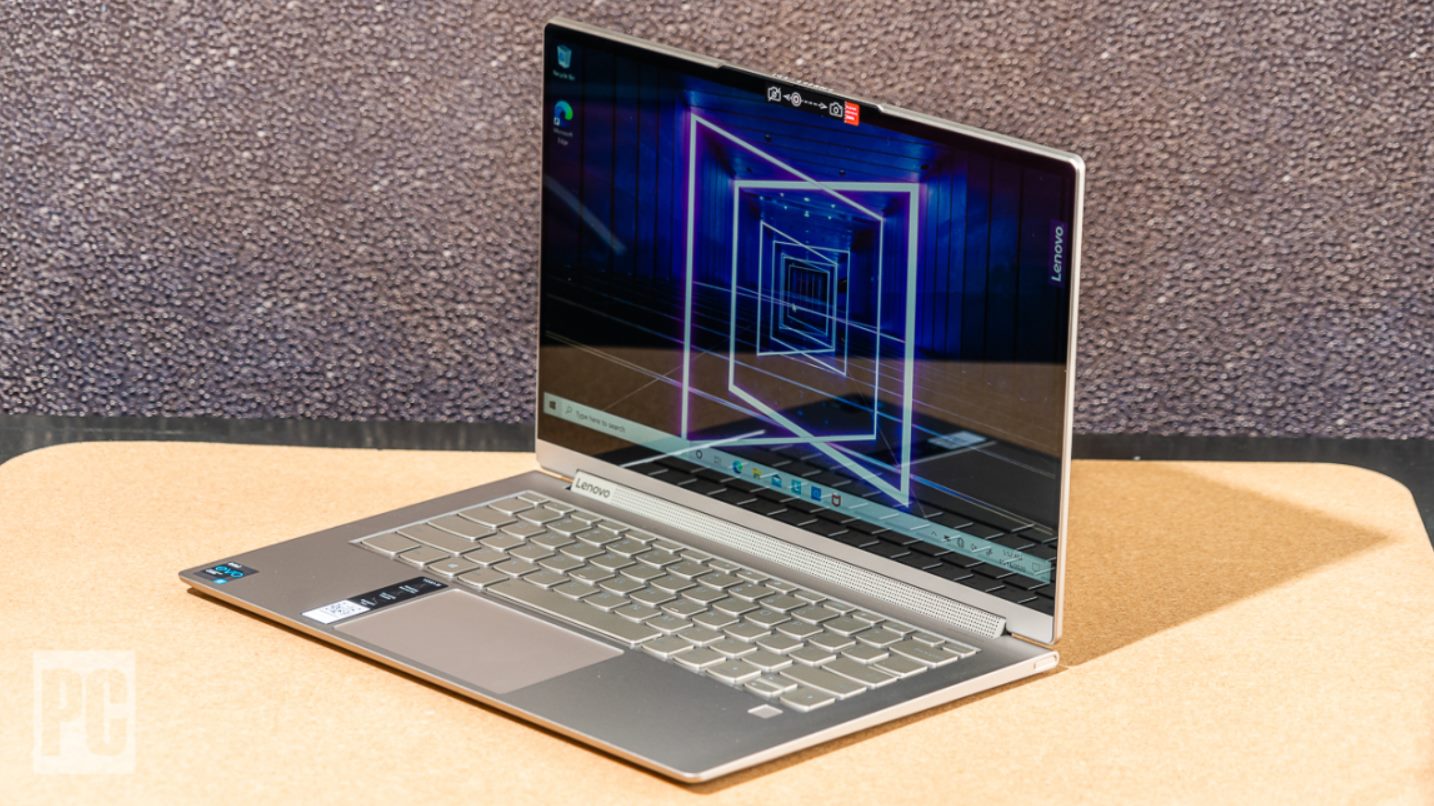Introduction
Welcome to the guide on how to restore the operating system (OS) on your Lenovo ThinkPad Ultrabook X1 Carbon. Whether you encountered a critical error, a virus, or simply want a fresh start, restoring the OS can help resolve these issues and reinstall the necessary software.
The Lenovo ThinkPad Ultrabook X1 Carbon is a powerful and sleek laptop designed for professionals on the go. With its lightweight construction, stunning display, and impressive performance, it is essential to know how to restore the operating system correctly to keep your device running smoothly.
In this guide, we will explore various methods to restore the OS on your Lenovo ThinkPad X1 Carbon, including utilizing the recovery partition, a recovery USB drive, or a Windows installation disk. We will also discuss the recovery options specific to the ThinkPad X1 Carbon and provide troubleshooting tips for common issues that may arise during the restoration process.
Whether you are a tech-savvy individual or a novice, this guide will walk you through the steps needed to restore the operating system on your ThinkPad X1 Carbon, ensuring that your device is up and running in no time.
Before proceeding with the restoration process, it is crucial to back up your important files and data to prevent any data loss. Restoring the OS will erase all current data on your device, so it’s essential to have a backup copy to restore from once the OS is successfully reinstalled.
Now, let’s dive into the different methods of restoring the operating system on your Lenovo ThinkPad Ultrabook X1 Carbon and get your device back to its optimal performance.
Preparing for OS Restoration
Before you begin the process of restoring the operating system on your Lenovo ThinkPad Ultrabook X1 Carbon, it is essential to make some preparations. These steps will ensure a smooth restoration process and help safeguard your data.
1. Backup Your Data: As mentioned earlier, restoring the OS will erase all data on your device. Therefore, it is crucial to back up your files and important data before proceeding. You can use external storage devices such as USB drives, external hard drives, or cloud storage services to create a backup. Make sure to include your important documents, photos, videos, and any other files you want to preserve.
2. Ensure Power Supply: Make sure that your Lenovo ThinkPad X1 Carbon is connected to a stable power source throughout the restoration process. Losing power during the process can cause issues and potentially corrupt your OS. It is recommended to have your device plugged into a power outlet or use a fully charged battery.
3. Disconnect External Devices: Unplug any external devices or peripherals connected to your Lenovo ThinkPad X1 Carbon, such as printers, scanners, or external monitors. Removing these devices will help prevent any conflicts or errors during the restoration process.
4. Make note of Software and Drivers: Before restoring the OS, take note of the software programs and drivers you currently have installed on your device. This information will be useful when reinstalling them after the restoration process is complete. Gather any necessary installation media or download links for the specific software and drivers you need.
5. Gather Recovery Media: Depending on the method you choose to restore the OS, you may need specific recovery media. This could include a recovery USB drive, a Windows installation disk, or the built-in recovery partition on your Lenovo ThinkPad X1 Carbon. Ensure you have the necessary recovery media readily available before proceeding.
By following these preparations, you will be ready to restore the operating system on your Lenovo ThinkPad X1 Carbon without any hiccups. Taking these precautionary measures will help safeguard your data and ensure a smooth restoration process.
Creating a Backup
Before embarking on the process of restoring the operating system on your Lenovo ThinkPad Ultrabook X1 Carbon, it is crucial to create a backup of your important files and data. This ensures that you can easily restore your personal files and settings after the OS restoration is complete.
Here are the steps to create a backup on your Lenovo ThinkPad X1 Carbon:
- Identify the files to backup: Take some time to determine which files and data are essential to you. This may include documents, photos, videos, music, and other personal files. Make a list of these items to ensure that nothing is left behind.
- Decide on the backup method: You have several options for backing up your data. You can use an external hard drive, USB flash drive, or cloud storage service. Each option has its advantages, so choose the method that suits your preferences and needs. For large amounts of data, an external hard drive may be the most practical choice, while cloud storage offers convenience and accessibility.
- Backup using File Explorer: If you decide to use an external storage device, open File Explorer on your Lenovo ThinkPad X1 Carbon. Locate the files and folders that you want to backup, then select them. Right-click on the selection and choose “Copy.” Next, navigate to your external storage device and right-click, then select “Paste.” Allow the files to copy over to the external device. Depending on the size and number of files, this process may take some time.
- Backup using Cloud Storage: If you opt for cloud storage, sign up for a reliable and secure cloud storage service such as Google Drive, Dropbox, or Microsoft OneDrive. Install the necessary application on your ThinkPad X1 Carbon and follow the instructions to set it up. Once installed, you can simply drag and drop your files into the designated folder or use the service’s sync feature to automatically back up specific folders to the cloud.
- Verify your backup: After the backup process is complete, it is crucial to verify the integrity of the backup. Open a few random files from the backup location to ensure that they open successfully and are accessible. This step will give you peace of mind, knowing that your files are correctly backed up.
By following these steps, you will have successfully created a backup of your important files and data, ensuring that they are safe and ready to be restored after the OS restoration process. Taking the time to create a backup is a crucial step in protecting your valuable data and ensuring a smooth transition during the restoration process.
Restoring the OS Using Lenovo Recovery Partition
Lenovo ThinkPad Ultrabook X1 Carbon is equipped with a built-in recovery partition that allows you to restore the operating system quickly. The recovery partition contains the necessary files and tools to reinstall the OS without the need for external recovery media. Follow these steps to restore the OS using the Lenovo recovery partition:
- Power off your ThinkPad X1 Carbon: Shut down your laptop completely before starting the restoration process.
- Power on and continuously press the Novo button: Locate the Novo button on your ThinkPad X1 Carbon. It is usually located on the left side of the device. Press the Novo button and hold it down.
- Boot into the Novo Button Menu: While holding down the Novo button, power on your laptop. Release the Novo button once the Novo Button Menu appears on the screen.
- Select “System Recovery” option: In the Novo Button Menu, use the arrow keys to navigate to the “System Recovery” option and press Enter to select it.
- Choose “Restore from initial backup” or “Restore from user’s backup”: Depending on your preferences and the available options, select either “Restore from initial backup” to restore the system to its original factory state or “Restore from user’s backup” if you have previously created a backup using the Lenovo backup software.
- Follow the on-screen prompts: Once you have selected the restore option, follow the on-screen prompts to initiate the restoration process. The process may take some time, so be patient and avoid interrupting it.
- Complete the setup: Once the OS restoration is complete, your ThinkPad X1 Carbon will restart. Follow the on-screen instructions to complete the initial setup, including setting up your user account, time zone, and other preferences.
- Reinstall necessary software and drivers: After completing the initial setup, you will need to reinstall any software programs and drivers that were not included in the OS restoration process. Use the notes you made earlier about your software and drivers to facilitate this step.
By following these steps, you can easily restore the operating system on your Lenovo ThinkPad X1 Carbon using the built-in recovery partition. It is a convenient and efficient method to bring your device back to its original factory state.
Restoring the OS Using a Recovery USB Drive
In addition to the built-in recovery partition, you can also restore the operating system on your Lenovo ThinkPad Ultrabook X1 Carbon using a recovery USB drive. This method is useful if your recovery partition is damaged or if you prefer to have a separate recovery medium. Follow these steps to restore the OS using a recovery USB drive:
- Create a recovery USB drive: Connect a USB drive with sufficient storage capacity to your ThinkPad X1 Carbon. Ensure that the USB drive is empty, as all data on it will be erased. Visit the Lenovo support website and download the official recovery image for your specific model and operating system version. Follow the instructions provided by Lenovo to create the recovery USB drive using the downloaded recovery image.
- Power off your ThinkPad X1 Carbon: Completely shut down your laptop before proceeding to the next step.
- Insert the recovery USB drive: Insert the recovery USB drive into one of the USB ports on your ThinkPad X1 Carbon.
- Power on your laptop and continuously press the appropriate key: As the laptop powers on, continuously press the appropriate key (often F12 or Enter) to enter the boot menu. The specific key may vary depending on your model and BIOS version.
- Select the USB drive as the boot device: In the boot menu, use the arrow keys to navigate to the option that represents your USB drive and press Enter to select it as the boot device.
- Follow the on-screen prompts: Once the system boots from the USB drive, you will see a series of on-screen prompts. Follow the instructions provided to initiate the OS restoration process. Be patient as the process may take some time.
- Complete the setup: After the OS restoration is complete, your ThinkPad X1 Carbon will restart. Follow the on-screen instructions to complete the initial setup, including setting up your user account, time zone, and other preferences.
- Reinstall necessary software and drivers: Once the initial setup is complete, you will need to reinstall any software programs and drivers that were not included in the recovery image. Use the notes you made earlier about your software and drivers to facilitate this step.
By following these steps and using a recovery USB drive, you can easily restore the operating system on your Lenovo ThinkPad X1 Carbon. This method is especially useful when the recovery partition is inaccessible or damaged.
Restoring the OS Using a Windows Installation Disk
If you don’t have access to the built-in recovery partition or a recovery USB drive, you can still restore the operating system on your Lenovo ThinkPad Ultrabook X1 Carbon using a Windows installation disk. This method allows you to perform a clean installation of Windows and start fresh. Here’s how to restore the OS using a Windows installation disk:
- Obtain a Windows installation disk: Acquire a Windows installation disk that matches your version of Windows. You can either purchase it from a retailer or create a bootable USB drive with the Windows ISO file. Make sure to have a valid product key for your Windows version.
- Power off your ThinkPad X1 Carbon: Shut down your laptop completely before proceeding.
- Insert the Windows installation disk: Insert the Windows installation disk into the optical drive of your ThinkPad X1 Carbon. If you are using a bootable USB drive, insert it into the USB port.
- Power on your laptop and continuously press the appropriate key: As your laptop powers on, continuously press the appropriate key (usually F12 or Enter) to enter the boot menu. The specific key may vary depending on your model and BIOS version.
- Select the installation media as the boot device: In the boot menu, use the arrow keys to navigate to the option that represents your Windows installation disk or USB drive, then press Enter to select it as the boot device.
- Follow the Windows installation process: Once the system boots from the installation media, you will be guided through the Windows installation process. Follow the on-screen instructions, including selecting your language, region, and input preferences. When prompted to select an installation type, choose “Custom” or “Advanced” to perform a clean installation.
- Partition and format the drive: In the Windows installation process, you will have the option to partition and format the drive. Select the drive where you want to install Windows and choose to format it. This step deletes all existing data on the drive, so ensure you have backed up your important files.
- Complete the Windows setup: Once the installation is complete, follow the on-screen instructions to set up your user account, time zone, and other preferences.
- Reinstall necessary software and drivers: After completing the initial Windows setup, you will need to reinstall any software programs and drivers that were not included in the Windows installation. Use the notes you made earlier about your software and drivers to facilitate this step.
By following these steps and using a Windows installation disk, you can restore the operating system on your Lenovo ThinkPad X1 Carbon with a clean installation of Windows. This method is particularly useful when the recovery partition or recovery media is not available.
Working with the Lenovo ThinkPad Ultrabook X1 Carbon Recovery Options
The Lenovo ThinkPad Ultrabook X1 Carbon offers a range of recovery options that can be helpful in various situations. These recovery options provide flexibility and additional solutions to fix system issues or restore the operating system. Let’s explore the recovery options available on the ThinkPad X1 Carbon:
- Lenovo OneKey Recovery: The Lenovo OneKey Recovery feature allows you to create a system backup and restore your ThinkPad X1 Carbon to its previous state. This feature can be accessed by pressing the Novo button and selecting “System Recovery” from the Novo Button Menu. Lenovo OneKey Recovery provides a straightforward and convenient way to restore your system.
- Windows System Restore: Windows System Restore is a feature integrated into the Windows operating system. It creates restore points at specific times, allowing you to revert your system to a previous state. To access this feature, go to the Control Panel, search for “System Restore,” and follow the prompts. Windows System Restore is useful for resolving issues caused by recent software installations or updates.
- Windows Safe Mode: Windows Safe Mode is a diagnostic mode that starts your ThinkPad X1 Carbon with a minimal set of drivers and services. It can help troubleshoot issues with your system and allows you to restore the operating system. To access Safe Mode, reboot your laptop, continuously press the F8 key during startup, and select “Safe Mode” from the Advanced Boot Options menu.
- Lenovo Diagnostic Solutions: Lenovo provides diagnostic tools and software that can help identify and resolve hardware and software issues. These tools can be accessed through the Lenovo Support website or pre-installed utilities on your ThinkPad X1 Carbon. Running diagnostics can help pinpoint specific issues and assist in the recovery process.
- Online Support Resources: Lenovo offers extensive online support resources, including knowledge bases, forums, and user guides. These resources can provide step-by-step instructions, troubleshooting tips, and additional guidance for recovering your ThinkPad X1 Carbon. The Lenovo Support website is a valuable source of information and assistance.
By utilizing the recovery options available on the Lenovo ThinkPad Ultrabook X1 Carbon, you have additional tools and resources to resolve system issues or restore your operating system when needed. Each option provides different functionalities and benefits, so explore and utilize the option that best suits your specific situation.
Troubleshooting Common Issues
While restoring the operating system on your Lenovo ThinkPad Ultrabook X1 Carbon can resolve many issues, there are some common problems that may arise during the process. Understanding and troubleshooting these issues can help ensure a successful restoration. Here are some common issues you may encounter and ways to troubleshoot them:
- Unexpected errors during restoration: If you encounter unexpected errors or disruptions during the OS restoration process, try restarting your ThinkPad X1 Carbon and initiating the restoration process again. It is also beneficial to ensure that you have a stable power supply and a reliable internet connection.
- Missing recovery options: If you find that the recovery options mentioned earlier are not available or do not work, it is possible that the recovery partition or files have been corrupted. In such cases, using a recovery USB drive or a Windows installation disk may be your best option.
- Software and driver compatibility: After restoring the OS, you might encounter issues with software and drivers. Ensure that you have the latest versions of the software and drivers specific to your ThinkPad X1 Carbon model. Visit the Lenovo Support website to download and install the necessary updates.
- Data loss during restoration: Restoring the operating system on your laptop will erase all data on the drive. To avoid data loss, always create a backup of your important files and data before commencing the restoration process.
- Hardware issues: If you experience persistent hardware issues, such as overheating, battery drain, or connectivity problems, restoring the OS might not resolve these issues. In such cases, it is recommended to contact Lenovo Support for further assistance or consider seeking professional repairs.
If you encounter any severe issues or find that you are unable to resolve the problem yourself, it is advisable to seek assistance from Lenovo Support or a qualified technician. They can provide expert guidance and troubleshooting specific to your ThinkPad X1 Carbon model and situation.
By understanding and troubleshooting these common issues, you can overcome obstacles during the OS restoration process and ensure a successful restoration of your Lenovo ThinkPad X1 Carbon.
Conclusion
Restoring the operating system on your Lenovo ThinkPad Ultrabook X1 Carbon can be a crucial step in resolving system issues, recovering from malware attacks, or simply starting fresh. In this guide, we have explored various methods to restore the OS on your ThinkPad X1 Carbon, including utilizing the recovery partition, a recovery USB drive, or a Windows installation disk. We have also discussed the recovery options specific to the ThinkPad X1 Carbon and provided troubleshooting tips for common issues that may arise during the restoration process.
Before proceeding with the OS restoration, it is essential to back up your important files and data to prevent any data loss. Creating a backup ensures that you can easily restore your personal files and settings after the OS restoration is complete.
Whether you choose to restore the OS using the built-in recovery partition, a recovery USB drive, or a Windows installation disk, each method offers its benefits and flexibility. Make sure to follow the step-by-step instructions and precautions provided in this guide to ensure a smooth restoration process.
Furthermore, we discussed various troubleshooting tips for common issues that may arise during the OS restoration process. By understanding and troubleshooting these issues, you can overcome obstacles and successfully restore the operating system on your ThinkPad X1 Carbon.
Remember, Lenovo provides online support resources and diagnostic tools to assist you during the restoration process. If you encounter persistent hardware issues or find that you are unable to resolve the problem yourself, do not hesitate to seek assistance from Lenovo Support or a qualified technician.
Restoring the operating system on your Lenovo ThinkPad X1 Carbon can bring your device back to its optimal performance and resolve any lingering issues. By following the methods and tips outlined in this guide, you can confidently undertake the OS restoration process and enjoy a smooth, stable, and efficient experience on your ThinkPad X1 Carbon.

























